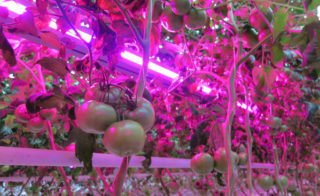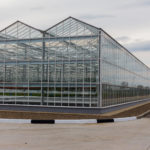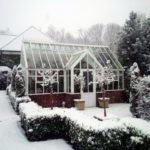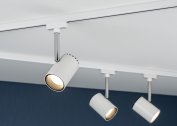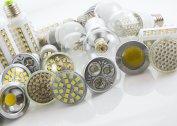Ensuring high yields is the most important task of any farmer. One of the factors that affects the high fertility of crops is lighting. It is light that provides the best conditions for growth, nutrition, formation and other processes of life. You can assemble the backlight yourself, it is only important to choose the lamp, taking into account many factors.
Lighting Ranges
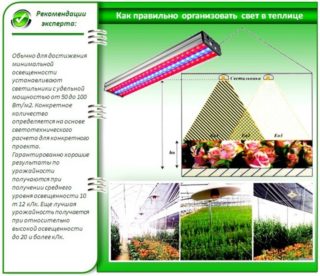 Lack of lighting or poor quality of artificial light can lead to the death of plants. This is due to the fact that with a lack of photosynthesis, the process of life and the development of cultures directly depends on it. With a small consumption of sun, the growth process will slow down, fertility will deteriorate, cuttings and stems will be unnaturally lengthened.
Lack of lighting or poor quality of artificial light can lead to the death of plants. This is due to the fact that with a lack of photosynthesis, the process of life and the development of cultures directly depends on it. With a small consumption of sun, the growth process will slow down, fertility will deteriorate, cuttings and stems will be unnaturally lengthened.
Natural daylight is the best lighting for plant life. Artificial greenhouse lighting can affect crops in various ways. It can be divided into ranges by wavelength:
- 320 nm - 400 nm - such lighting is required by plants in a small amount;
- 400 nm - 500 nm - blue is required for vegetative growth of vegetation;
- 500 nm - 600 nm - green is necessary for photosynthesis of lower leaves;
- 600 nm - 700 nm - red illumination is necessary for photosynthesis during flowering;
- 700 nm - 750 nm - far red is required in small quantities;
- 1200 nm - 1600 nm - there is an acceleration of biochemical reactions.
Vegetation reacts differently to each spectrum at a certain stage of its development. But during the whole life of the plants, the radiation must be complete and contain all colors. If at least any part of the radiation spectrum is absent, the crop will be of poor quality.
Since luminaires that can completely imitate and replace sunlight are not invented at present, several lamps must be combined.
Backlight time
An important role is played by the amount and frequency of illumination. Fruiting plants need more sun than those that produce edible foliage.
Short-day cultures are:
- zucchini;
- eggplant;
- Tomatoes
- peppers.
They need 8-10 hours of light.
The following plants need more than 12 hours:
- bow;
- garlic;
- dill;
- salad;
- cucumbers
- cabbage;
- roots.
Before creating a greenhouse lighting, you need to calculate the illumination in advance. High-quality lighting for vegetation will include several bulbs from a different spectrum. Lamps must be installed so that all plants receive light.
Lighting for different types of greenhouses
There are 3 types of greenhouses: polycarbonate, industrial and winter.
Polycarbonate is a high-quality covering material that is actively used in greenhouses. It has high light transmission and unpretentious care. In a polycarbonate greenhouse, you need to install several types of lamps. The following greenhouse light is commonly used:
- incandescent lamps - they give excessive radiation, which can negatively affect plants;
- mercury - additionally heat the room;
- sodium - are characterized by high light output and yellow-orange spectrum, favorable for plants;
- fluorescent - the best option for greenhouses, interact well with UV bulbs;
- halogen - precisely repeat the spectrum of natural illumination;
- LED - give high-quality blue and red light.
In industrial greenhouses, special lamps with high efficiency and high-quality light are used. Commonly used are sodium light sources.
Winter is characterized by a short daylight hours. Sunlight is not enough, so you need to choose the right lighting equipment. The main criteria are the duration and power of the backlight.
- Industrial
- Winter
- Polycarbonate
It is important to consider the area of the greenhouse. The light should be uniform throughout the greenhouse, so you can use lights with reflective reflectors. By the type of bulbs, mercury, sodium, luminescent (ideal for winter lighting), metal halide, LED sources are used.
Lamp options
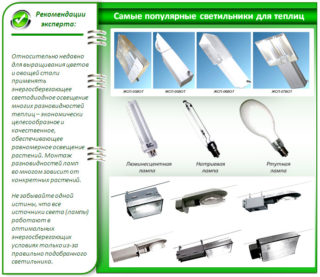 Incandescent bulbs are not recommended for use when growing plants. They have low efficiency, give light that can adversely affect vegetation, and also do not last long.
Incandescent bulbs are not recommended for use when growing plants. They have low efficiency, give light that can adversely affect vegetation, and also do not last long.
Luminescent sources must be selected by color temperature. The most affordable is cold light, suitable for background lighting. Warm color is used by gardeners. There are combined devices that combine the advantages of warm and cold colors. Great for night lighting.
Energy-saving appliances are small and convenient. They are used together with reflective reflectors.
Gas discharge lamps are represented by mercury, sodium and metal halide devices. They are used in professional greenhouses, they are expensive. They have high light output and a spectrum favorable for vegetation. Metal halide sources imitate natural spring lighting and are used in the first phase of growth.
LEDs and LED strip for greenhouses are the most environmentally friendly and modern devices. They have high efficiency, long service life and require a small amount of electricity. You can make LED lamps for the greenhouse with your own hands.
Lighting for different cultures
For growing cucumbers, the following rules must be observed in the greenhouse:
- the use of additional light with a lack of natural;
- there should be no break between daylight and artificial light;
- the period of darkness is 6 hours;
- temperature under artificial light +/- 8 degrees.
For onions you need natural light in the greenhouse. Additionally used phytolamps.
To grow strawberries, you need fluorescent lamps of meter length with a capacity of 40-50 watts.
The formation of strawberry inflorescences occurs during 14-18 hours of daylight. When using additional light, fruiting occurs earlier and the yield increases. In nature, it occurs during the spring-summer period.
Tomatoes require additional lighting with direct light. In the early days, the backlight is applied for 20 hours, gradually reducing it to 16 and 12 hours.
The calculation of lighting is carried out according to the formula F = E x S / Ki, where F is the required light flux, E is the illumination, S is the area of the greenhouse, Ki is the utilization of the flux.
Electrification of greenhouses
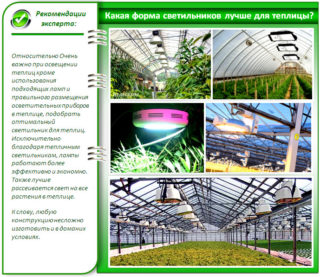 The electrification process of the greenhouse is not difficult even for a beginner. It consists of the following steps:
The electrification process of the greenhouse is not difficult even for a beginner. It consists of the following steps:
- creation of layout schemes for greenhouses and lighting fixtures;
- calculation of footage of wires, junction boxes;
- purchase of materials - cables, sockets, switches and other auxiliary devices;
- output wires from the shield to the greenhouse;
- connecting wires to outlets.
Wires can be routed through ground and air. For proper, safe and reliable installation, a number of requirements must be observed. The depth of the trench when laying underground should be at least 0.8 m, it should not intersect with the drainage system, and the cable itself must be protected by a corrugated pipe. When laying aerial cables, do not touch bushes and trees, as this can lead to wire breakage.
Particular attention should be paid to the selection of the cable cross section for lighting in the greenhouse. The calculation can be done using formulas that take into account power and current.
